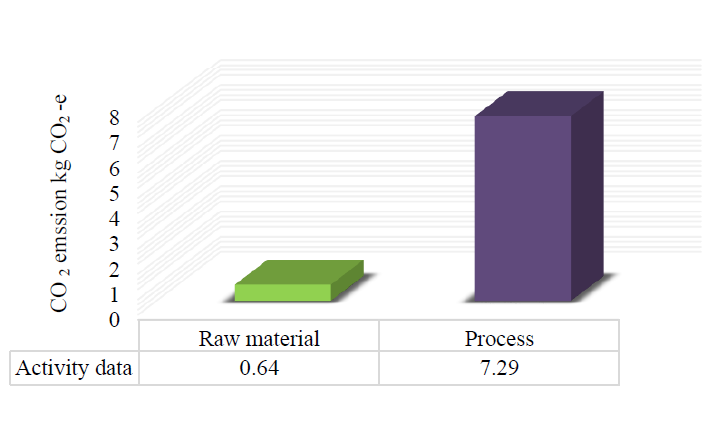Carbon Footprint of Rice Straw Paper Plate
Keywords:
Carbon footprint of product, Greenhouse gas, Life cycle assessment, Air pollution, Rice straw paper plateAbstract
ABSTRACTThe objectives of this research to study the greenhouse gas emissions (GHG) of rice straw paper plates and to compare the environmental pollution from burning rice straw to make rice straw paper plates. In addition, it is suggested as a guideline for the use of rice straw. The study was based a Carbon Footprint of Products (CFP) on the concept estimation principle of the Thailand Greenhouse Gas Management Organization ( TGO) . Data was recorded from rice straw paper plate production by community enterprise Arak Group from Lat Bua Khao sub-district, Ban Pong district, Ratchaburi province, Thailand. The methodology was investigated from harvest material to production process until rice straw paper plate. The result was that 20 kg of rice straw emitted 7.93 kg CO2e; on average, 1 plate emitted 0.0441 kg CO2e. The results of the data analysis in each process were as follows: most GHGs averagely emitted 7. 29 kg CO2e; GHGs accounted for 91. 96% of process production. The second highest from raw material usage emitted 0. 64 kg CO2e of GHGs, which accounted for 8. 04% of the reduction in burning as follows: CO2, CH4, PM10, PM2.5, Black Carbon, CO, NH3, NOX, SO2, NMVOC and Organic Carbon averagely emitted 351,765. 39, 1,115. 52, 3,631. 93, 150. 47, 15,357. 88, 153. 06, 767. 89, 155. 65, 2,062. 42, and 907.98 tons, respectively, of the total amount of rice straw in Ratchaburi province, Thailand.

